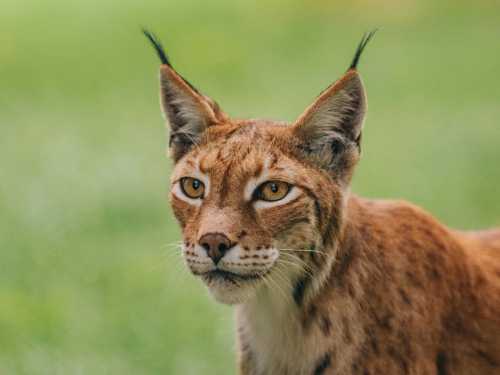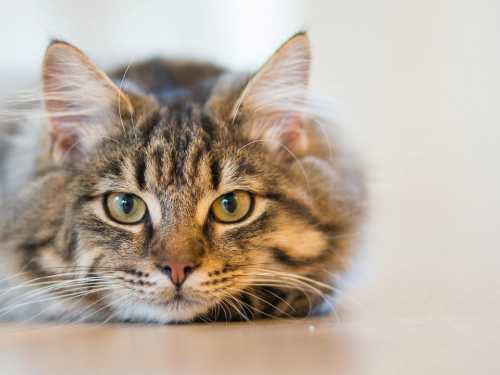
For many people, knowledge of the lynx is limited to its prominent ear tufts and renowned speed. However, the true uniqueness of this animal is much broader.
There are four recognized species of lynx: the Eurasian lynx, the Canadian lynx, the Spanish or Iberian lynx, and the bobcat, each of which is adapted to specific conditions.
It always amazes me how much we can understand about the wild world just by observing it, and how little we sometimes realize from what is happening “behind the scenes”. It reminds us that first impressions can be deceiving, and the true essence is always deeper than it seems.
Tassels are a unique adaptive element
It's worth starting with the wildcat's most notable “accessory” – its ear tufts. These black tufts of hair that crown the tips of the ears are considered a key element that enhances the animal's hearing and helps it more accurately determine the source of sound. Thanks to their ability to collect and direct sound waves, the tufts allow the lynx to catch even the quietest movements of prey, such as mice hiding under the snow.
Competition for survival: lynx and fox
The relationship between lynxes and foxes in the wild is a prime example of competition for resources. The lynx, as the larger and stronger predator, often views the fox as a competitor for food, especially for small rodents and hares, which are the main diet of both species. The consequence of this interspecific competition can be that lynxes actively displace foxes from their territories and even kill them, although they are rarely consumed as prey. This behavior is called “interference competition” or “competitor killing”, and it is well documented in many ecosystems.
Nature has its own laws that often seem cruel to us if we try to interpret them through the prism of human emotions. Competition for survival is a fundamental principle that shapes relationships between species. I wonder what the world would be like without such competition, and whether it would even be viable.
A wild predator, not a pet
An encounter with a lynx in the wild usually does not pose a direct threat to humans, as these animals are naturally very shy and try to avoid contact. However, it is important to remember that a lynx is a wild predator. If cornered, provoked, or if it senses a threat to its offspring, its reaction can be extremely dangerous. With one powerful leap, a lynx can knock down an adult human and cause serious injuries. Its strength and instincts make it unpredictable.
Contrary to popular but dangerous belief, the lynx is not a suitable pet. It is a wild animal with unbridled hunting instincts, a need for a large territory and a specific diet. Keeping a lynx in captivity requires extraordinary efforts, special conditions, and huge financial costs. Attempts to “domesticate” a lynx often lead to the animal's suffering due to the inability to satisfy its natural needs, as well as to a significant risk to the safety of the owners and others. Even individuals raised from childhood retain their wild instincts and can be aggressive.
I have always believed that wild animals belong in the wild. The idea of keeping such a powerful predator as a pet seems to me not only unreasonable, but also deeply unethical.
Lynx mating rituals
The mating games of lynxes, although they have their own specifics, are not aggressive “bumps”, as it may seem. During the breeding season, which usually falls at the end of winter – the beginning of spring, male and female lynxes enter into an interaction that includes a whole range of behavioral manifestations.
Males actively seek out females, using scent markings and loud vocalizations such as purring, growling, and screaming to attract attention. Courtship is often accompanied by chasing, playful fights, and affectionate displays such as mutual licking of fur and rubbing of heads or bodies. These interactions serve to establish a bond between partners, assess physical readiness for mating, and strengthen social bonds. The purpose is not to “test patience” as some believe, but to prepare for successful reproduction and provide the best conditions for procreation.
I think we often try to understand the animal world through the lens of our own experiences, which leads to misconceptions. What seems aggressive or strange from our perspective is completely natural. Observing courtship rituals in the wild is always fascinating, because they show how complex and sophisticated the interactions that lead to the creation of new life can be.
Devoted single mother
Unlike many other mammal species, lynxes are predominantly solitary animals, and males, with rare exceptions, participate in raising offspring.
The female lynx is solely responsible for the care and training of her kittens. After birth, usually in the spring, she raises them alone, providing them with food, warmth and protection. The mother hunts independently, brings the kittens prey (first small rodents, and then larger game), gradually teaching them hunting skills, camouflage and caution. The kittens remain with their mother for up to 9-11 months, and sometimes longer, until they become fully independent hunters. It is the maternal instinct and her exceptional skills that allow the younger generation of lynxes to successfully adapt to life in the wild and ensure the survival of the species.
Natural grandeur and instincts
Lynxes, being largely solitary animals, exhibit behaviors that are entirely focused on survival and efficient hunting, rather than on human concepts of “politeness” or “decency.” Their social interactions, although rare, may include marking territory to avoid conflict, as well as occasional mutual licking of fur between relatives, which promotes hygiene and strengthens bonds. However, this is not a display of “respect” in the human sense, but rather part of instinctive social mechanisms.
Lynx behavior is driven by instinct and adaptation to the environment. Their efficiency as predators, patience and prudence when hunting allow them to lead a successful self-sufficient existence. Any actions that seem to us to be “greed” or “cheating” in the wild are actually natural strategies for the struggle for existence or competition for resources. Lynx reacts to threats or opportunities, guided solely by their predatory instincts, which ensure their survival and success in the harsh world of wildlife.
It's easy to “humanize” animals, attributing our emotions and morals to them. But the beauty of wildlife lies precisely in its authenticity, in the fact that each creature is a perfect product of evolution, functioning according to its own laws. For me, it's a reminder of how far we humans have become separated from our natural instincts, and how important it is to remember the true nature of the wild world.





